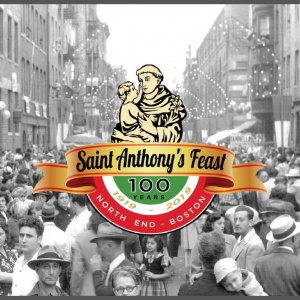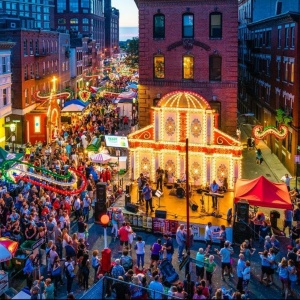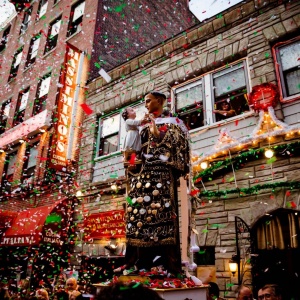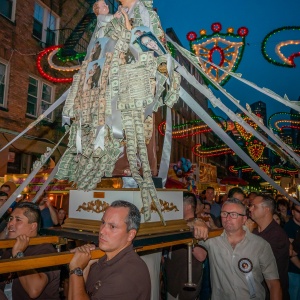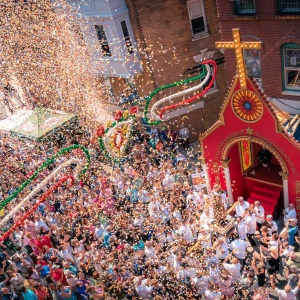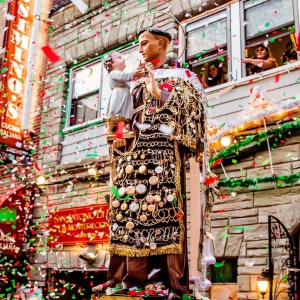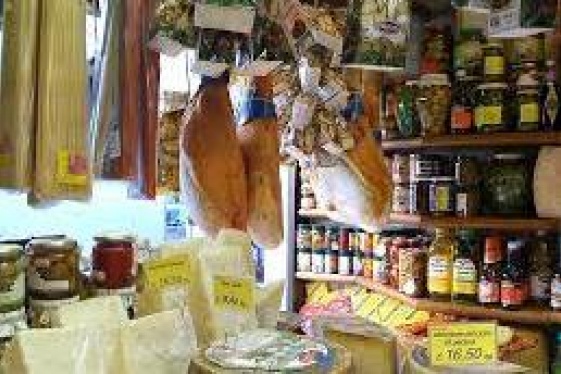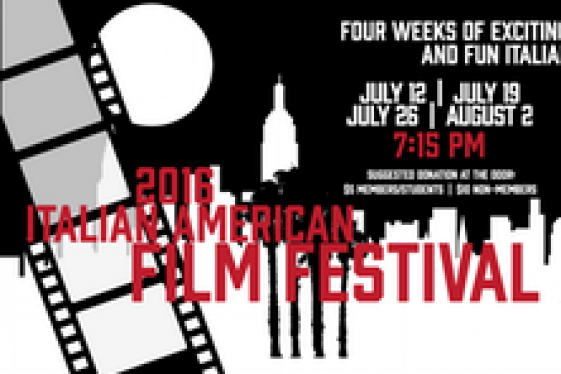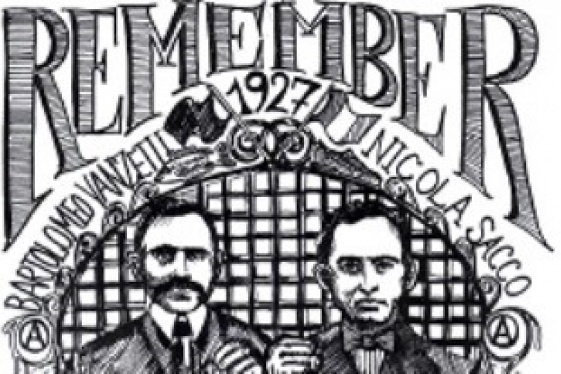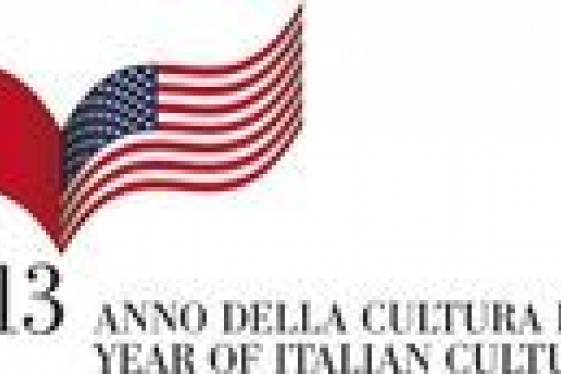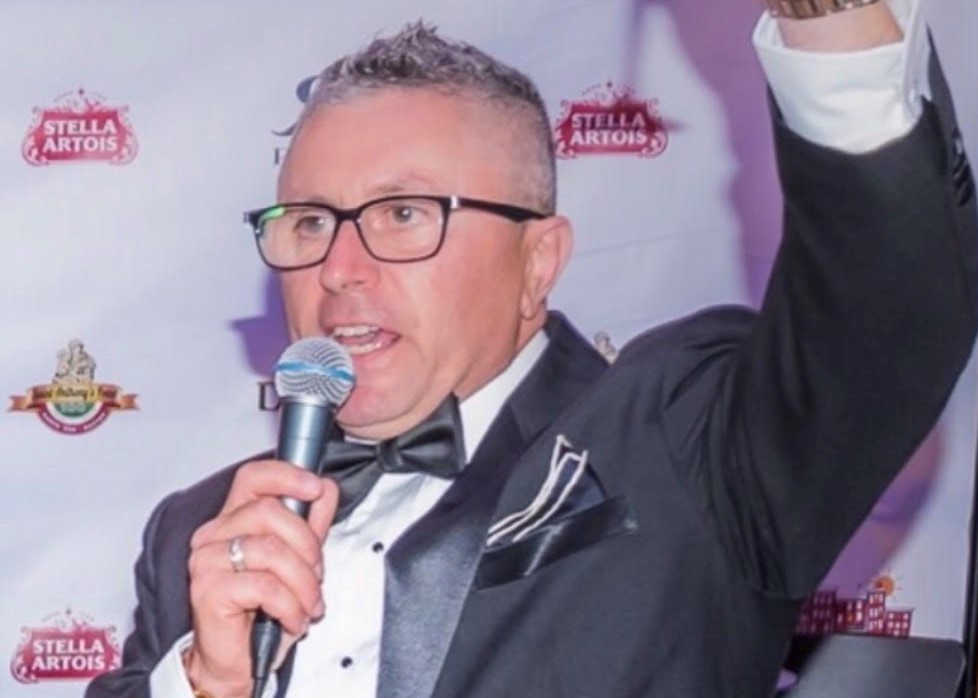
Paul D'Amore (President of the St. Anthony’s Feast in Boston, MA)
Auguri per i 100 anni della Festa di St. Anthony a Boston

Summer is the festival season. In the United States there are more than 200 that celebrate Italianity, according to the list published each year by OSIA. Some of these were born many years ago, from the desire of Italian emigrants to celebrate their country of origin, sometimes their region, sometimes their city: and almost always their religion and the patron Saint of their town of origin had a fundamental role.
One of the largest, most popular and beloved of these festivals is the St. Anthony’s Feast in Boston, MA. This year the festival is 100 years old, and We the Italians celebrates this important anniversary by interviewing the President of the festival, Paul D'Amore. Welcome to We the Italians!
Paul, the St. Anthony’s Feast in Boston begun in 1919, and this year celebrates its 100th anniversary. It is the largest Italian Religious Festival in New England. Please tell our readers something about the history of this beautiful event and its evolution through the decades
We celebrate the Feast because we love Saint Anthony, and that’s the most important reason.
The Feast started back in 1919, in the North End, Boston’s Little Italy. A few immigrants came to Boston from Montefalcione, which is in the Avellino province. Saint Anthony’s Feast goes on in Italy every year the last weekend of August, and they missed the Feast, so they said: “Why don’t we start our own feast?” So they started this small Feast in 1919, a group of 10 men and it was very small. They kept Saint Anthony’s staue in one of the members’ house and it started like a little “get together” in the street. Then, before you know it, 100 years go by, and it becomes the largest street festival in New England, maybe in the whole United States. We boast over 300,000 people that come through the street of North End, the Italian section of Boston. It’s an amazing event, not just for the Feast, but also for the whole Italian section, which is awesome. In 1988, Saint Anthony in Montefalcione celebrated its 300th anniversary, so we are proud we are building it together.
The interesting part about this Saint Anthony’s Feast, myself, and how it all has come together is I was born in Montefalcione and I immigrated here as a little boy. Back then I was already part of Saint Anthony’s Feast: I would set up little stands, I would sell watermelon and little different things. Little I knew that a few years later I would end up being the President of the society, the only member part of the society that was born in that town in Italy, so it’s a real true honor to be representing Saint Anthony’s Feast here in Boston as the President. As we speak, my family is part of the Saint Anthony’s Feast in my town in Montefalcione, so there is a real big link between Italy and America.
When this event started 100 years ago, the North End was made up of a lot of local people, and as the time went on and the city became bigger, a lot of the immigrants moved out of the city. So it came the time when we started asking how we would fund the Feast to make it happen, because it’s such a large feast. As time went on, a lot of these people became older and either passed or moved away from the city and we had to find other ways to make this happen. So we have a lot of big sponsors, big companies that became part of our Feast, so they came in and donated money for our organization and this provides the opportunity to run this big festival.
What we do in return is that, during the course of the year, we give money to some organizations, charities, churches, people that are in need. So we give back. All we make, we give back to the communities and surrounding people.
What usually happens during the four days of the Feast, this year from August 22 to August 25?
The main event is the procession. It’s always on Sunday, this year will be on Sunday 25th . It starts at 11:30Am and goes on to 9PM at night. What do we do, along with our 130 members and many, many, many hundreds of people behind it? We walk through the streets of the North End. And as we do that, people put money on the Saint, and we have certain spots where we stop at with the Saint: people and families say a prayer, somebody put some bows on it, other people pin money, other people just touch it. We do this through the whole street, it’s a long day and it is a wonderful, wonderful event. As it happens, we have seven to eight bands around the streets playing in all different spots. We have two with the Saint at all times, and the other bands kind of go around the whole North End. So if you go to the North End that day, you can be at a different spot and you can run into an orchestra, you can run into a marching band, or you run into the Saint and it has two traditional bands that follow it. It’s a great experience.
We bring the Saint around and then, obviously, the last place that we bring it is the chapel where Saint Anthony stays: the chapel is in Endicott Street where we have our society, and he stays there through the week, on Friday night, Saturday night and then Sunday. Then Sunday we bring him home which is inside the chapel, we take all the money off, we take all the bows off and then it stays there until the next year’s Feast. We take Saint Anthony out only during the Feast, no other time.
The Feast is pretty much a combination of four streets and it is just full of people, it takes you 1 hour to walk from one end to the other end. There are all street vendors lined up on either side of the street selling food, selling shirts, all kinds of things that you would see at a street festival. Very different from my town, in Montefalcione. But at the end of the day we both have the same goal: we both worship our patron saint.
Our association does everything. We will have fireworks that will be going off on the Friday, outside of the Feast but that’s in order to celebrate the Feast. The Feast itself is such a big event, because it goes on in the whole North End, literally. It’s so busy that there’s people everywhere, it’s just like, picture a party that goes on for four-five days. That’s what happens, that’s what it is. It’s mostly Italians, Christians and Italians, but people come from all over the continent not just Christians and Catholics, all different races come, different religions.
We do a lot of other things. We have an entertainment stage, with different music: on our website you can see we have different bands, like Louis Prima Jr., a jazz band, an Italian orchestra playing. So Thursday, Friday, Saturday and Sunday you can listen to all kinds of different music, you can dance from the morning ‘till the evening, it’s always changing. That’s one of the great things.
Another thing we do is a cooking stage. It also run four days, and every hour we have different chefs that come from different restaurants and institutions and do cooking demonstrations.
Then, throughout the Feast we have four outdoor areas where people can just have a drink, get something to eat, there are restaurants, you can have pizza and wine. I am the owner of one of the restaurants who sponsor the event, Massimino’s: it is next door to the club where we hold the Feast.
It’s a lot of work, but the amount of fun we have is amazing, with people coming from all over the United States. We have Buffalo (NY) people pulling in all weekend, we had from as far as California, Canada and Florida, and also people who even come from other countries, because they happen to be here and they’ll visit the Feast. It is a lot of fun.
In terms of planning, from January to May we have five different events and wine dinners at different restaurants throughout North End. We start the buzz of what’s happening about the Feast. In June, we have a black-tie event at Marriott Hotel, with almost 200 people, very elegant, very nice, thanking people who are part of it, recognizing some of the older members in the club, talking about our history. Leading up to the event, we have a lot of little things that go on, some things that go unnoticed and some that don’t. And then, we just start setting up two weeks before the Feast and then the week of the Feast, when it’s really going to happen.
Is there a special happening to celebrate the 100th anniversary?
One of the wonderful things that will happen this year is that we will have the relic of Saint Anthony coming to our Feast, which is an amazing highlight. It’s going to be here on the whole weekend, it will be out Saturday August 24th. It will be available for the public to see from 9AM to 1PM on the street, and then from 1PM in our chapel which is on Endicott Street, the main street of the Feast.
I’ve always been curious about the procession of the Saint with people dancing, singing and putting money on the statue. A hundred years ago, even if they were catholic too (or maybe right because of that), Irish people were not that happy about this tradition involving money and a statue of a Saint…
Saint Anthony as we know it’s Portuguese, Sant’Antonio was from Portugal. I have to say I have never heard before that someone was against putting the money on it. For example, in my town in Montefalcione, we don’t put the money on the Saint, we put the money on la mazza. Here, that’s how the tradition started, we are a traditional organization, so we keep the tradition. I understand the topic you are touching on, and that’s way before my time.
Given that nowadays things are different than 100 years ago, is the meaning of this wonderful event the same, or something has changed in it too?
That’s a great question. We have 130 members and I am the only one that was born in the town, there are other members who were born in Italy. But for the members that were not born in Italy or have no experience with Italy, this is their way of connecting with Italy via the Saint. But for me it’s the same: the most important thing is the connection for all of us with Saint Anthony first and then Italy also. That’s what brings us together, being Italian, having a beautiful heritage, a beautiful culture, and through the Feast is how we show it. So the member body is very proud to say “I’m Italian, I represent Saint Anthony here in Boston, look what we do because of our beautiful culture in Italy.” If you are in the area, you see this and say “Ok, that’s nice.” But if you are not in the area, maybe you live an hour away, you come and you experience it and talk to one of the members, and say “Oh my God, this is so beautiful, you have such a nice culture, it’s so nice, thank you guys, keep going” because we have been working very hard at making this happen. We are all very proud of being Italian, we are all very proud of representing Saint Anthony.
What’s the story of the Italian emigration to Boston?
The Italian immigrants started to come into Boston in the late 19th century, obviously, 1890. It was a very very small percentage of Italians: most people came here for a reason, not because they wanted to but because they had to. I am part of that immigration too (even if I came much later than 1890) because when I migrated here as a little boy we were a very poor family: we had no money, we had no place to live, we weren’t really looked at as equal people, we were kind of looked down at, which wasn’t very nice. And that’s why I learned as a little boy never to judge anybody. But anyhow, as time went on people started appreciating the Italians. Because the Italians are very good people, they are hard-workers, they are family people, they care, and they keep their word. So these are things that built communities.
You guys have still a sparkling and much alive Little Italy, the North End. How is the Italian community in Boston today, and what Italy can do to improve its relationship with it?
The North End of Boston, when I grew up, was an area that was below average. Italians came here, they bought all the real estate, they built it up, they put together communities, they build many many small businesses in the community, and now it is a very good area and if you want to buy real estate here in Boston is very expensive, almost impossible. Immigrants are the people who built this country. The Italian immigrants definitely built little Italy in the North End of Boston and still today, if you go around, there are so many small little businesses in two squared miles and the majority of those businesses are run by Italian families. The immigrant story is very close to me, because we worked very hard and we continue to work hard and then we show our kids what is like where we came from, to be where we are today.
You that you can stop into a restaurant, a bakery, a coffee shop and you are going to be able to speak Italian, you are going to have someone who understands Italian. There’s not many places left in the United States of America where you can do that today. The Italians come here for that reason, they feel very comfortable, they feel safe. A lot of them stay, a lot of them end up moving away, but this is still truly Italian. Today there are still many Italians that come visit us, that want to stay here, and I know that’s an issue because it’s hard to get the paperwork here in America. But I wish there was an easier way. For example, I am a chef: there are so many great chefs in Italy that would love to work in America, but it’s hard for them. So if there was an easier way for the Italians that want to come here, it would be amazing. If they could come here, they would have success: because Italians, no matter what they do, whether they are journalists whether they work in the restaurant business, whether they are brick layers, it doesn’t make a difference, they have success. That’s what we need in the United States.
I did a program last year with an Italian TV show called Little Big Italy. They came here and it was actually a great experience. When they came here, it was a group of them, cameramen, etc., tutti italiani, all Italians. I felt like I was home. It felt so good, it was amazing. A great experience. Italy is amazing, it’s the most amazing place in the world. I only wish that could be a little easier for the young people that are there to flourish, that’s my only concern.
You may be interested
-
‘Fuggedaboudit’ the motto of new Italian del...
By Kimberly Sutton Love is what brought Tony Nicoletta to Texas from New York.The transpl...
-
“The Hill” St. Louis’ Little Italy
When the fire hydrants begin to look like Italian flags with green, red and white stripes,...
-
13th Annual Galbani Italian Feast of San Gen...
In September of 2002, some of Los Angeles' most prominent Italian American citizens got to...
-
1st Annual Little Italy Cannoli Tournament
Little Italy San Jose will be hosting a single elimination Cannoli tournament to coincide...
-
2016 Italian American Film Festival
When: Tuesday, July 12, 2016 | Tuesday, July 19, 2016 - Tuesday, July 26, 2016 | Tues...
-
9th Annual Sacco and Vanzetti March/Rally
Saturday, August 23rd, in Boston, the 87th anniversary of the execution of Nicola Sacco an...
-
A Week in Emilia Romagna: An Italian Atmosp...
The Wine Consortium of Romagna, together with Consulate General of Italy in Boston, the Ho...
-
An Italian American Feast For Family Reunion...
Hey, come over here, kid, learn something. ... You see, you start out with a little bit of...





